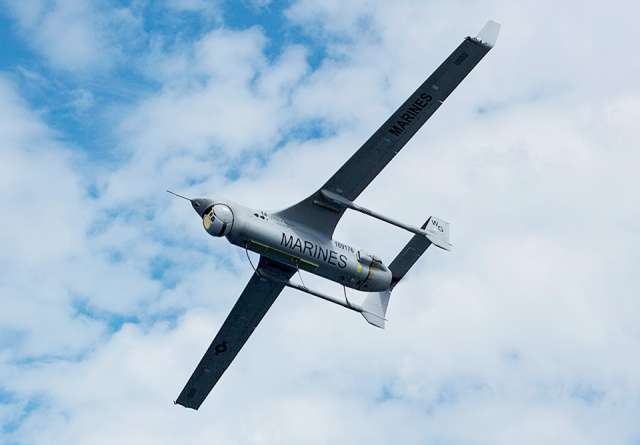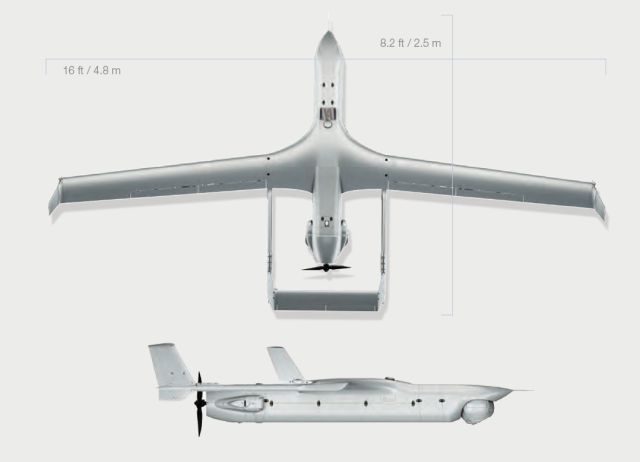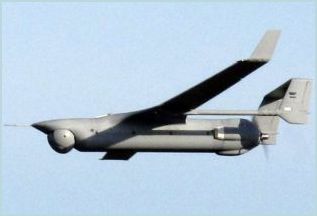RQ-21A Blackjack/Integrator
| a | ||||||||||||||||||||||
|
RQ-21A Blackjack/Integrator Small Tactical Unmanned Aerial System
|
||||||||||||||||||||||
|
|
||||||||||||||||||||||
 |
||||||||||||||||||||||
|
|
||||||||||||||||||||||
|
The Integrator/RQ-21A Blackjack (military denomination) is a small tactical unmanned aerial system designed and manufactured by Insitu, which is part of Boeing. Insitu was awarded the Small Tactical Unmanned Aerial System contract in 2010 to begin development of RQ-21A Blackjack. This program of record for the United States Navy and United States Marine Corps was the first organic and dedicated multi-intelligence Unmanned Aircraft System (UAS) for USMC and USN tactical commanders. The RQ-21A system is modular, flexible and multi-mission capable, providing roll-on, roll-off transitions between land and maritime environments. RQ-21A Blackjack's open architecture payload bays can be customized with imagers, communication capabilities and other tools to deliver exceptional situational awareness. The USMC received a system from Insitu in Integrator configuration in January 2012 to execute early operational capability (EOC) for the STUAS programme. The maiden flight of the same was performed in the same month and the new system was deployed with USMC's unmanned aerial vehicle squadron (VMU) 2 and 3. The RQ-21A Blackjack successfully performed its first flight in July 2012. The land-based testing of the aircraft system was concluded in December 2012. The United States Marine Corps has ordered 32 systems each with five air vehicles each (100 systems planned by FY2017). The United States Navy has ordered 25 systems each with five air vehicles each. The Royal Netherlands Army ordered 5 systems in 5 systems, which entered in service in 2014. An unidentified Middle Eastern customer is likely to have purchased six Integrator systems.
|
||||||||||||||||||||||
| Main Variants | ||||||||||||||||||||||
|
-
|
||||||||||||||||||||||
| Technical Data | ||||||||||||||||||||||
| Design | ||||||||||||||||||||||
|
The drone is a bigger, heavier and more capable version of the Insitu ScanEagle unmanned aircraft that has logged thousands of hours with the Marine Corps and Navy in Iraq and Afghanistan. Unlike the ScanEagle, the Blackjack makes use of a twin-boom configuration using a centralized fuselage nacelle, strtaight wing assemblies and a rear-mounted engine. The RQ-21A Blackjack is a modular and flexible solution for both land and maritime operations, consisting of six payload spaces that can be customized with cameras, communication capabilities and a broad array of other payloads. The length and wing span of the RQ-21A Blackjack are 2.5 m and 4.8 m respectively. The system has an empty structure weight of 34 kg, maximum takeoff weight of 61 kg, and maximum payload capacity of 18 kg.
|
||||||||||||||||||||||
|
Mobility
|
||||||||||||||||||||||
|
The RQ-21A unmanned aircraft system is powered by a 100-cc two-stroke heavy-fuel reciprocating engine rated at 8hp. The engine integrates the electronic fuel injection (EFI), and burns JP-5 and JP-8 fuels. The UAS can execute mission for more than 13 hours. It has a ceiling of over 5,944 m and a minimum operating range of 50nm. The maximum horizontal speed and the cruise speeds are 90kt and 60kt respectively.
|
||||||||||||||||||||||
|
Payload equipment
|
||||||||||||||||||||||
|
Insitu and Boeing designed the RQ-21A to be a modular, flexible and multi-mission capable solution for both land and maritime operations. The aircraft’s six payload spaces can be customized with cameras, communication capabilities and other advanced mission-specific technologies to suit your operational needs. Integrator’s air-to-ground communications systems deliver direct payload communication up to 50 nmi from a ground control station. The system includes electromagnetic shielding to support customized communications relay and radio frequency sensor payloads to meet your mission needs. In the baseline configuration RQ-21A’s nose bay houses the Alticam Vision™ imaging system, a stabilized turret that eliminates in-flight vibrations and automatically tracks targets of interest. The turret incorporates the aircraft’s baseline sensor package, which features a laser rangefinder and IR marker and also includes. RQ-21A Blackjack's turret also comprises an electro-optic imager for high-resolution daytime imagery, allowing operators to focus upon and maintain positive identity for objects of interest (1.1°–25° optical field of view and 4x digital zoom); and a mid-wave infrared camera with quality thermal imaging for nighttime and low-visibility operations (2°–25° field of view and 4x digital zoom). The configurable payload spaces of the Blackjack are interfaced with a communications relay package, including Ethernet (TCP/IP) protocol and data encryption device. In February 2013, Z Microsystems received a contract from the US Naval Surface Warfare Center to provide intelligent display series (IDS) for RQ-21A. The IDS features flat panel displays that provide real-time enhanced video capabilities.
|
||||||||||||||||||||||
| Combat use | ||||||||||||||||||||||
|
The RQ-21A Blackjack is adapted to perform several different missions: Search and Rescue; Disaster Response; Force Protection; Combined Arms; Target Following; Battle Damage Assessment; Pattern of Life; Border Security; Asset Protection; Communications Relay; Networked Operations; Anti-Piracy; etc. The roll-on, roll-off capability of the RQ-21A assists to perform ship-to-objective manoeuvres. The lower logistics footprint ensures deployment from small sites and ship decks. The UAS supports tactical operations on land and at sea as it doesn't need a runway for landing.
|
||||||||||||||||||||||
| Specifications | ||||||||||||||||||||||
|
||||||||||||||||||||||
 |
||||||||||||||||||||||
|
||||||||||||||||||||||































